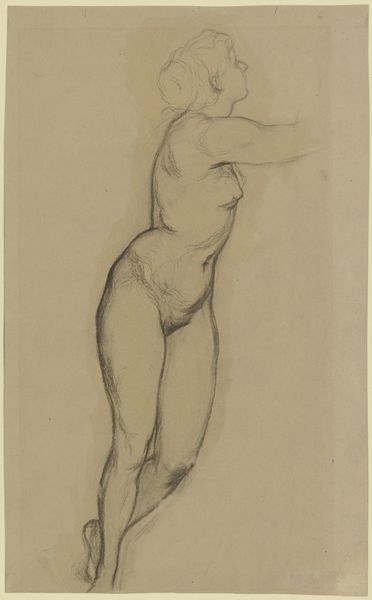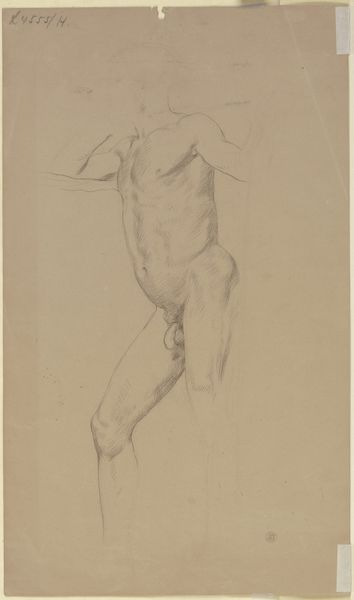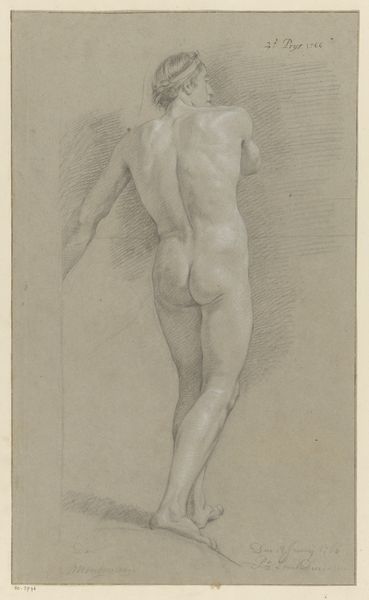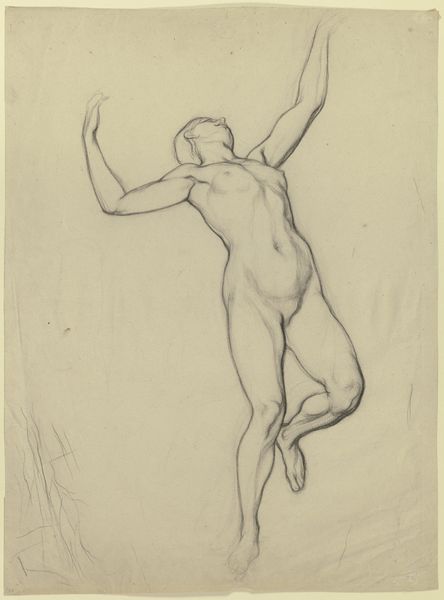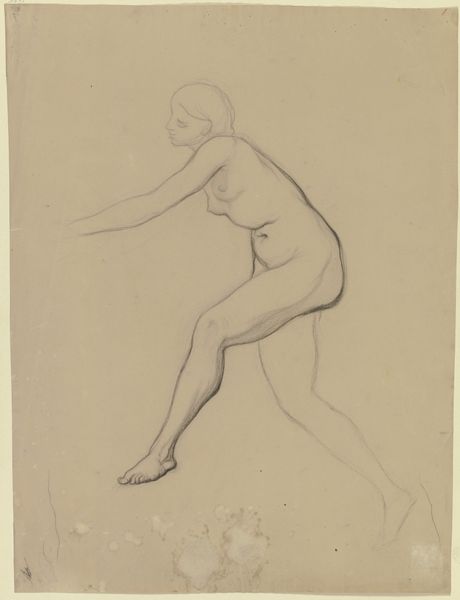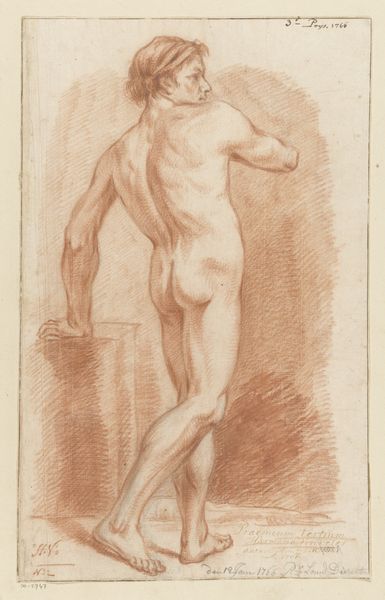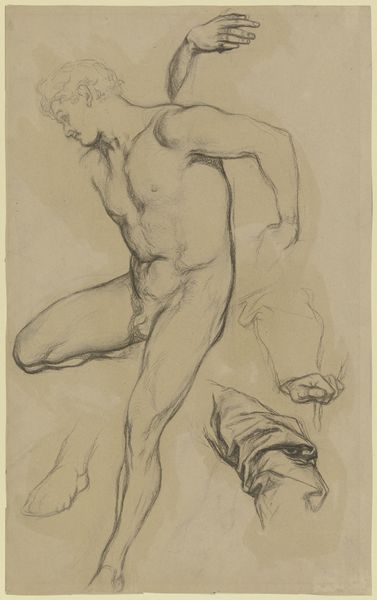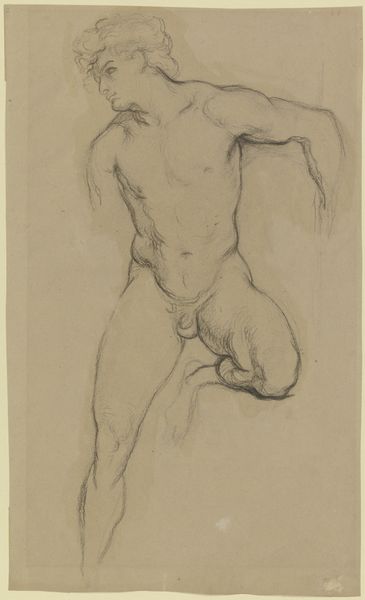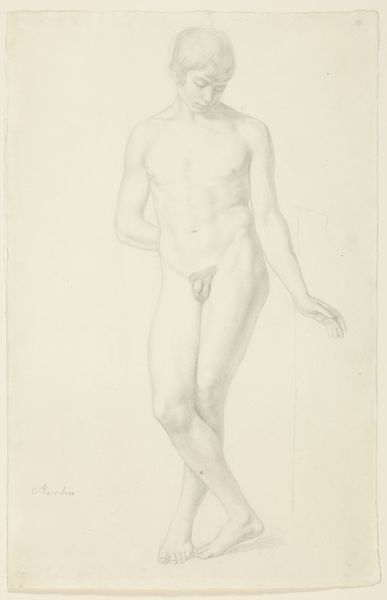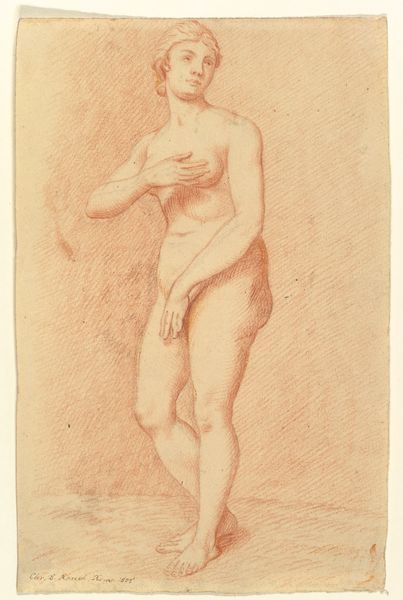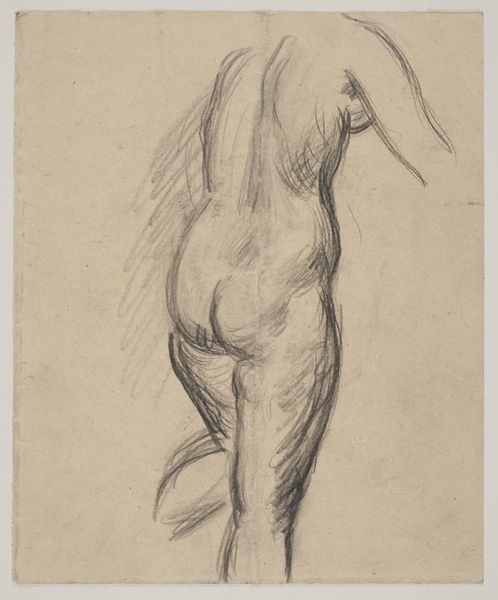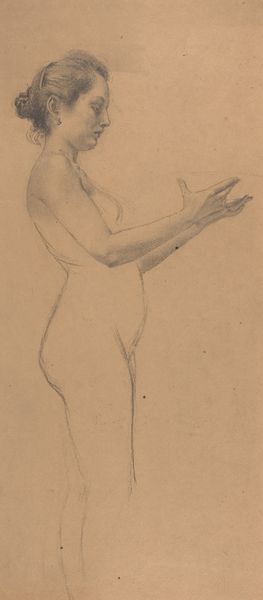
Dimensions: 12 15/16 x 8 1/4 in. (32.8 x 21 cm)
Copyright: Public Domain
Curator: Edgar Degas created this intriguing pencil drawing, "Youth in an Attitude of Defense," around 1859 or 1860. It’s currently held here at the Metropolitan Museum of Art. Editor: It’s stark, isn't it? Almost unsettling. The way the figure is turned, like he’s been caught off guard. The texture of the pencil on the page adds a raw, vulnerable feel. Curator: The preparatory nature is key, though. These nude studies were common academic exercises, part of a larger historical painting tradition where mastering the human form was paramount. Consider the intense scrutiny such studies were subjected to in the Parisian Salons. Editor: And how those artistic spaces then shaped the social and political narratives that artworks conveyed? Certainly, the idealized male nude, like we see here, served very specific cultural functions. But tell me, does this strike you as a truly "idealized" form? There’s a tension, a palpable anxiety in the posture. Curator: True, his stance isn’t heroic in the classical sense. Observe the strategic hatching – short, repetitive lines to build volume and shadow, particularly in the back muscles and the turn of the neck. The asymmetry too... It creates a subtle discord. Semiotically, this speaks of psychological uncertainty. Editor: Perhaps mirroring Degas's own societal uncertainties? His family had its own scandals during the Crimean war that had a political aftermath which he might have been responding to through this artwork. How did his personal political sentiments find their way into art created from this position? Curator: An excellent point. Although his societal standing offered the option to stand apart from political squabbles in public appearance. The raw physicality of the sketch allows for varied historical interpretations. Editor: It feels intimate, almost intrusive to see him like this. Curator: And the deliberate artifice of the art is itself now more clear. The artistic intention and impact create an endless paradox! Editor: A study in contrasts, then - both formal and historical! That uneasy balance, maybe, makes it stick in the mind.
Comments
No comments
Be the first to comment and join the conversation on the ultimate creative platform.

